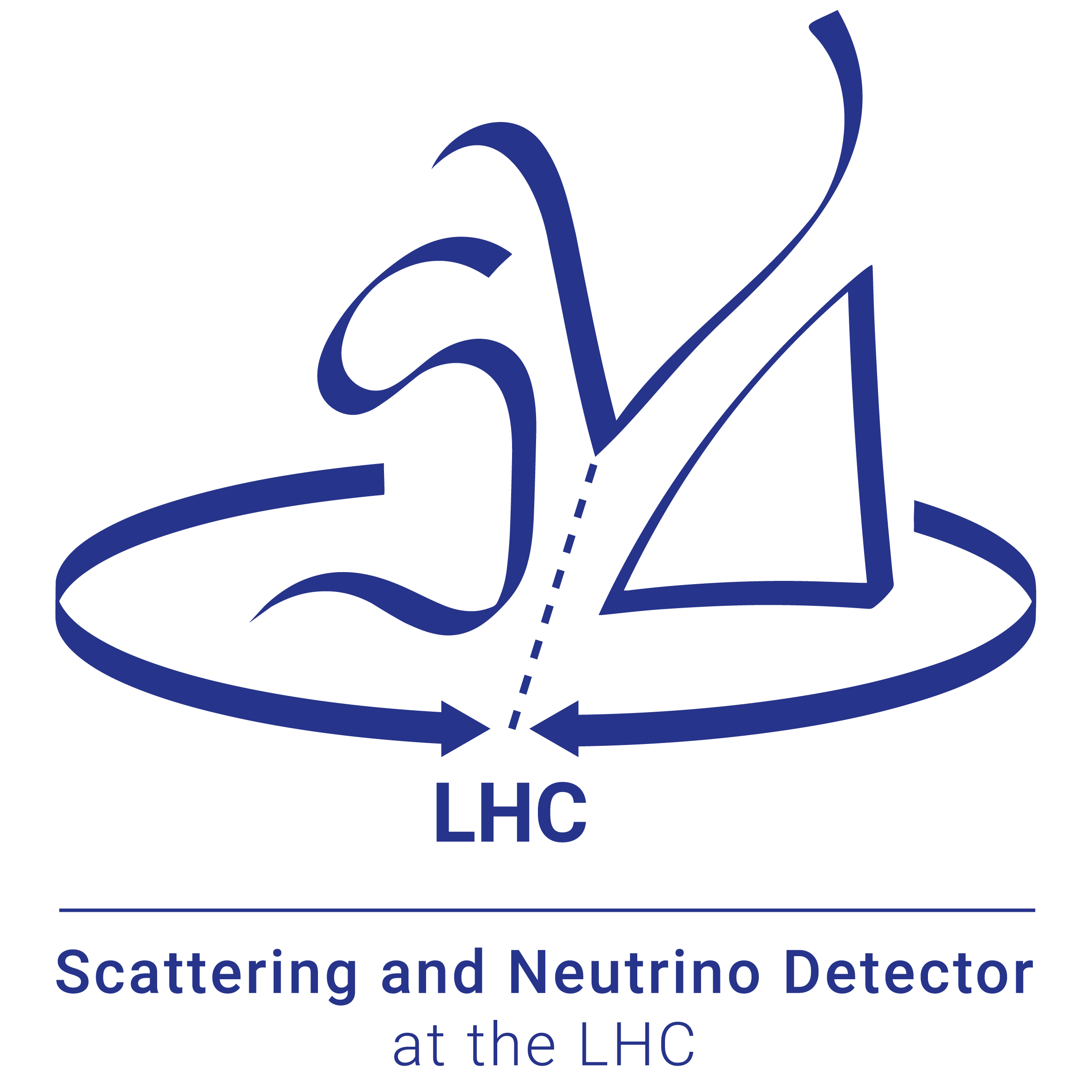Particle Physics at INFN Bari
The main focus of the research coordinated by the National Scientific Committee 1” on a national level and by Group 1 on a local level is to study the interactions of the fundamental constituents of matter with experiments using particle accelerators.
These studies have the purpose to gain a deep understanding of aspects like the mechanism that gives mass to particles, or the one responsible for the matter-antimatter asymmetry. In general, one is looking for any new possible scenario where the unsolved problems of the Standard Model could be explained by New Physics.
Generally, subnuclear physics requires very large and complex apparatuses, with leading edge technologies in the fields of detectors, electronics, data acquisition, computing and data analysis. The collaborations are formed by hundreds (or thousands) of physicists, from institutions and laboratories all over the world, an important example of international cooperation. The INFN groups participate with excellent contributions and in positions of responsibility at the highest levels in these experiments.

CMS Compact Muon Solenoid
The Large Hadron Collider (LHC) at CERN in Geneva is a particle accelerator, with a circumference of 27 km, designed to collide high intensity proton beams at a maximum energy of 14 TeV in the center of mass.
CMS (Compact Muon Solenoid) is one of the 4 experiments placed along the LHC beam line and one among its main objective is to study the Standard Model (SM) and the Higgs boson and to search for new physical phenomena, predicted by extensions of the SM, to search for extra dimensions and investigations on the nature of dark matter.
The CMS experimental setup has a cylindrical symmetry around the LHC beam line, and its detectors are immersed in the strong magnetic field of 4T (about 100,000 times the Earth’s magnetic field) thanks to the largest superconducting solenoid ever made, capable of storing an energy of 2.4 GJ. CMS has been designed to obtain maximum efficiency and precision in the detection of photons, electrons, muons, tau leptons, jets, jets originating from b-quarks and missing energy (index of the presence of elusive neutral particles). The apparatus is as hermetic as possible. Although large if compared to past experiments (15 m in diameter by 22 m in length and a weight equal to 14500 t), CMS is an elegantly compact apparatus.
The CMS experiment is carried out by one of the largest international collaborations in history, involving approximately 5,000 physicists, engineers, technicians, students and support staff from more than 200 institutes in 50 different countries around the world.
INFN is heavily involved in CMS experiment. About 250 physicists and engineers from 14 Sections and 2 National Laboratories work on the experiment. Significant fractions of the detection system for muons (both DT and RPC), of the electromagnetic calorimeter and of the Tracker Detector have been made in Italy.
Local coordinator: Donato Creanza

LHCb
Why is our Universe dominated by matter?
The LHCb (Large Hadron Collider beauty) experiment is one of four main experiments collecting data at the Large Hadron Collider at CERN.
LHCb has been primarily designed to measure, with unprecedented precision, the rare decays of particles and antiparticles containing the quarks called “beauty” and “charm” in order to detect subtle differences in their behavior which could explain why Nature prefers matter over antimatter, thus shedding light on one of the most intriguing mysteries in our Universe. If matter and antimatter were perfectly symmetric, they would have annihilated immediately after the Bing Bang and the Universe would be made of radiation only.
Nature is thus likely to hide unobserved phenomena, not included in the Standard Model of particle physics, and maybe new particles..
A huge experimental apparatus made of several detectors, as high as a three-floor building with a mass of about 5600 tons, detects the tracks left by the particles produced in the proton-proton collisions at LHC and measures their properties.
Combining the information from the different sub-detectors, a picture of the collision events is obtained. LHCb scientists analyze millions of events, searching for hints of New Physics, beyond the Standard Model, and sometime unexpectedly new or long sought particles appear, such as the recent experimental evidence of exotic combinations of quarks (tetraquarks and pentaquarks).
LHCb is a large international community: about 1400 scientists, engineers and technicians representing 86 different universities and laboratories from 18 countries are involved in the project.
The experiment is currently undergoing a major upgrade, and will restart taking data in spring 2022 with the LHC restart.
Local coordinator: Marilisa De Serio

Muon Collider
A multi-TeV muon collider is envisaged in the context of the European Strategy for Particle Physics, as one of the main options to shed some lights on the presence of new physics and, at the same time, to reach a great precision in the measurement of the properties of the Higgs boson.
Among the possible advantages of a muon collider with respect to electron-positron colliders, there is the modest energy loss due to synchrotron radiation. As a counterpart, one of the biggest technological challenges is the creation of muon beams, for which two options are currently being considered: MAP (Muon Accelerator Program) and LEMMA (Low Emittance Muon Accelerator).
In the MAP scheme, muons are created by the decay of pions emerging from the scattering of protons on a fixed target: the challenge here is to reduce the emittance of the beam as much as possible with state-of-the-art cooling systems, currently under study.
The LEMMA option, proposed by INFN, would allow the creation of low emittance muon beams thanks to the scattering of a positron beam on a fixed target. However, this process is characterized by extremely low probability and is currently under study.
The muons in the beams, even if accelerated to very high energy, have a limited lifetime; their decay induces a large amount of background (BIB, beam induced background), mainly photons, electrons, and neutrons, in the detectors. To mitigate this effect, tungsten shielding cones have been proposed around the beams. Despite this, it is expected a significant rate of background particles reaching the detectors. A possible solution to distinguish the particles created by muon scattering from the background ones, is to exploit the time-of-flight information recorded by each sub-detector, especially in the tracking system and in the calorimeters. Therefore, detectors with very high time and spatial precision are required.
Moreover, a crucial role will be played by jet and tracking algorithms that should employ cutting edge reconstruction techniques to fully exploit the discovery potential offered by such a machine. From the first studies, based on the simulation of μ + μ – → Hνν processes, it seems that the global approach (called particle-flow) for the reconstruction of the event allows to obtain excellent results and reduce the impact of the BIB.
The INFN Bari section is involved in the design of the experiment, with a proposal for new design of the hadron calorimeter based on MPDG sampling optimized for particle flow reconstruction, in the study of the physics program focusing on the Higgs sector and has expressed interest in the development of a facility for the study of neutrinos extracted from the decay of the muons in the beams.
Local coordinator: Rosamaria Venditti

SND@LHC, or Scattering and Neutrino Detector at the LHC
SND@LHC, or Scattering and Neutrino Detector at the LHC, is a new experiment at CERN Large Hadron Collider starting its data taking in 2022.
It has been specifically designed to detect and study new particles that are not foreseen by the Standard Model and can constitute light dark matter candidates, together with very high energy neutrinos produced for the first time at a particle collider (an accelerator in in which two beams of particles are made to collide). The SND@LHC detector is currently under installation at CERN.
The project is very challenging, opening a new frontier in neutrino and dark matter physics and making use of an extremely compact apparatus. A volume of about 2 cubic meters hosts technologically advanced detectors required for precise particle identification. The target region is made from tungsten plates interleaved with tracking devices leading to vertex reconstruction at micrometric level. Planes of scintillating bars interleaved with iron blocks serve as a downstream hadron calorimeter followed by a muon-identification system. Measurements of the time interval between neutrino production and interaction processes, 480 m far, help in separating n from new, heavier, interacting particles.
SND@LHC is currently a collaboration of 180 members from 23 institutes in 13 countries, from Asia to America. Researchers from INFN Bari and from the Physics Department of Bari University actively contribute to the project, working on particle detectors R&D and software developments for data analysis.
Local coordinator: Alessandra Pastore

FCC
The INFN FCC project was born in 2017 to coordinate the various activities aimed at studying possible experiments for future accelerators or with new acceleration techniques.
Activities focused on the study of new detector concepts for experiments at future electron-positron colliders.
IDEA is an example of this type of innovative conceptual detectors, designed to analyze electron-positron collisions with an FCC-ee lepton collider with a circumference of 100 km, capable of operating at center-of-mass energies ranging from 90 to 365 GeV. The FCC-ee collider allows to measure with extreme precision the couplings of the Higgs boson, discovered in 2012 at the LHC and all its properties (“Higgs factory”).
IDEA is a hermetic detector, divided into a central cylindrical region (barrel), closed at the ends by two endcap). The detector is composed of the following sub-detectors, in increasing order of distance from the primary vertex: a central tracker consists of a silicon detector, followed by a large multi-wire branch chamber with an external radius of 2m, which provides more than 100 measurements along the length of each charged particle and is fundamental for the particle identification.
The tracker is surrounded by a large, but thin, solenoid magnet that provides a magnetic field of 2T and is essential for bending the particle tracks and for measuring their momentum.
A calorimeter is placed further outside which has the particularity of measuring together the electromagnetic and hadronic component of the showers originated in the material of the calorimeter.
The last sub-detector is the muon detection apparatus, consisting of three stations placed at an increasing distance from the primary interaction vertex, located inside the iron that makes up the magnetic field return joke.
The Bari group is involved in the development of the IDEA multi-wire drift chamber, for the reconstruction and identification of particles.
Local coordinator: Nicola De Filippis
